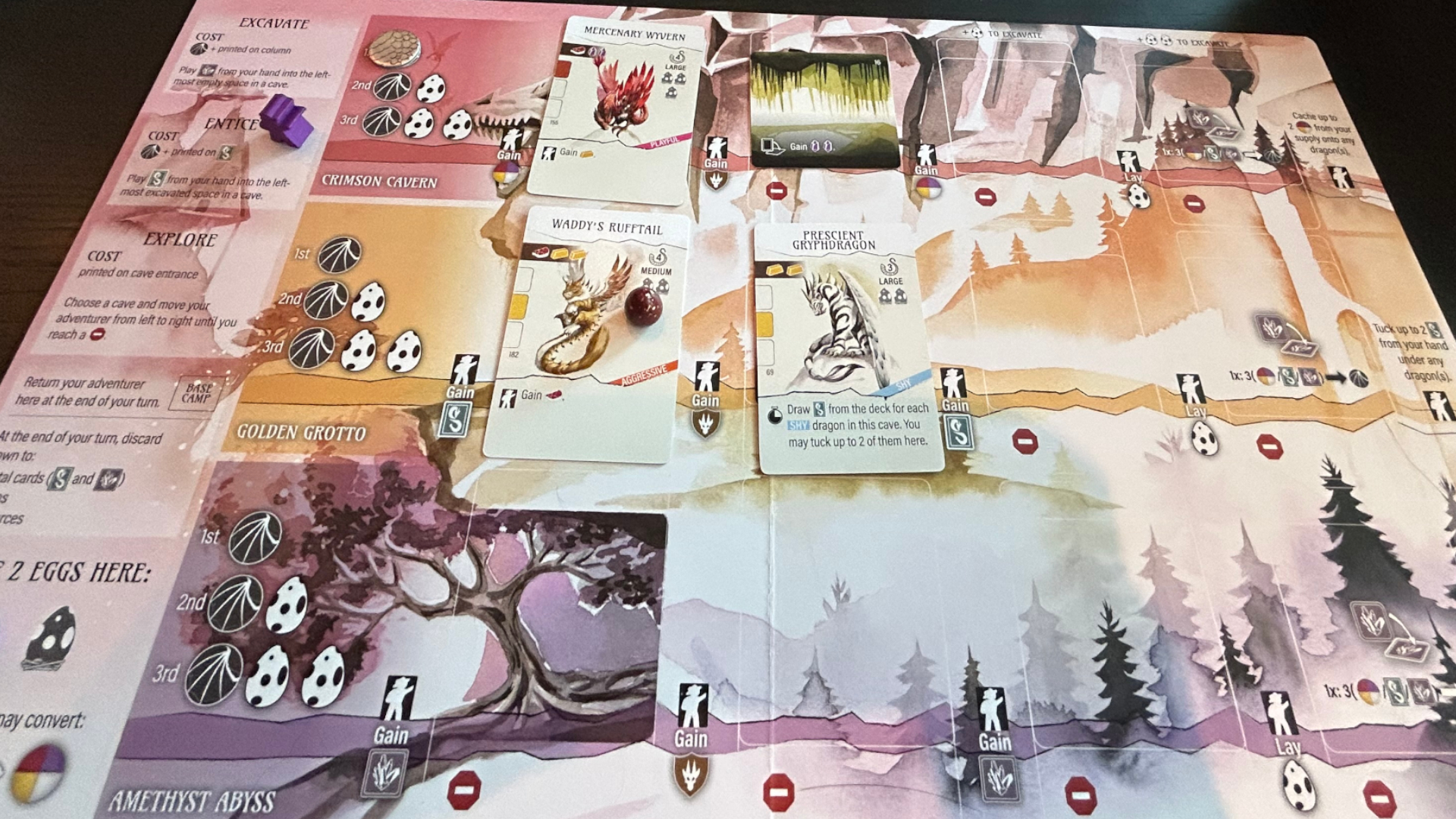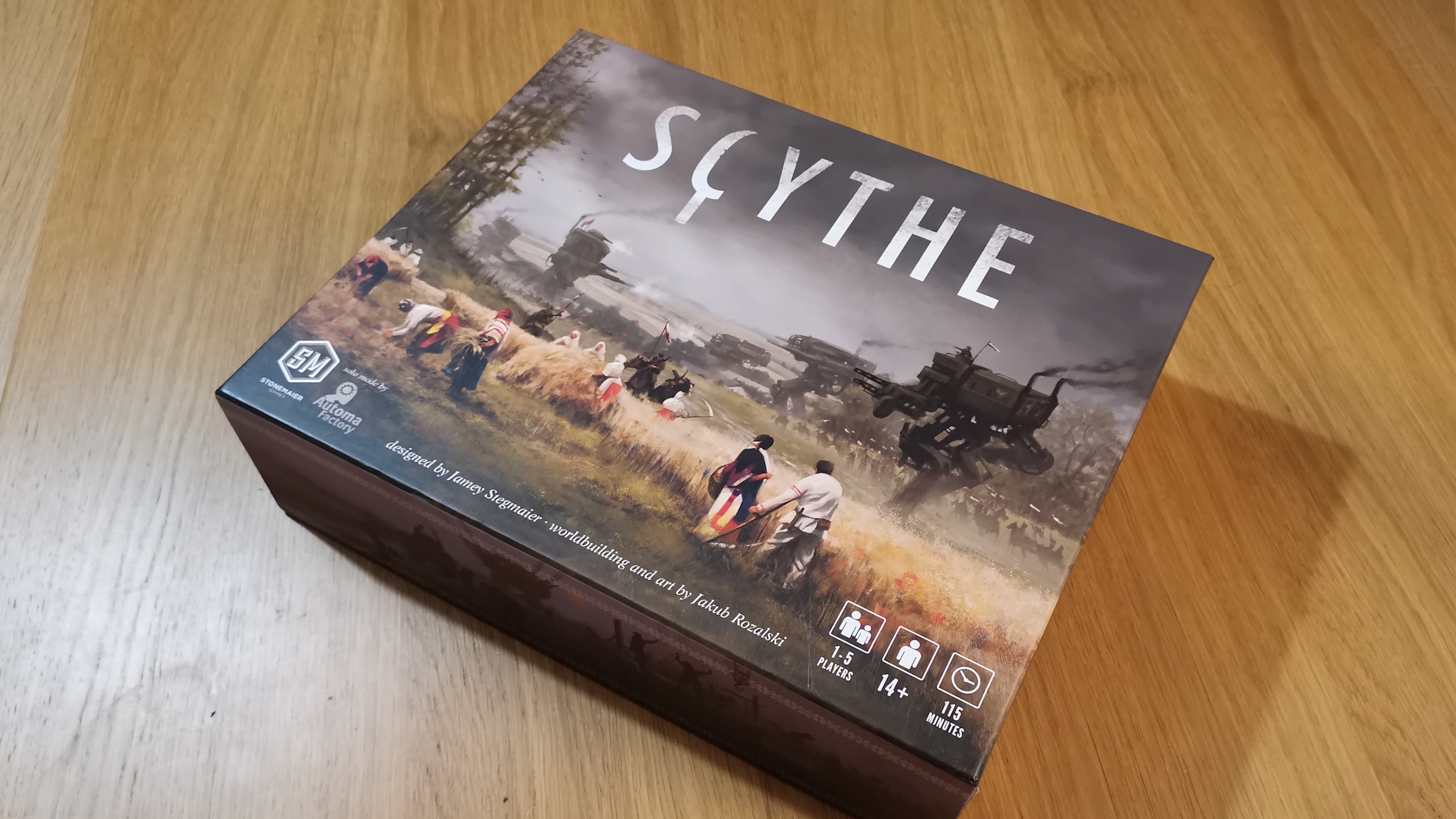GamesRadar+ Verdict
Wyrmspan puts a fantasy spin on the Elizabeth Hargrave’s engine-building board game Wingspan, and while the art is lovely, it loses the focus found in basing the cards off actual animals. Wyrmspan also ramps up the complexity but not the interactivity, leading to a fairly sluggish play experience where players have to spend too much time waiting between turns that won’t have much impact on their strategy.
Pros
- +
Gorgeous and creative dragon art
- +
High level of replayability thanks to abundance of cards
- +
Well-balanced solo mode makes it easy to test strategies
Cons
- -
Loses some of the best components of Wingspan
- -
Winning strategies aren’t always fun
- -
Low interaction means long waits between turns where there’s nothing to do
Why you can trust GamesRadar+
Elizabeth Hargrave’s Kennerspiel des Jahres-winning board game, Wingspan, has been a huge crossover success, inspiring multiple sequels and a digital edition with its gentle competition of gathering birds and eggs. Apiary designer Connie Vogelmann’s Wyrmspan uses many of the same mechanics, but swaps real birds for a wide variety of quirky dragons and adds several elements meant to appeal to players who prefer heavier strategy games.
While the art is beautiful and the pieces well designed, Wyrmspan is missing a lot of the charm of the original. There is so little interaction in the game it almost feels like turns could be taken simultaneously with a bit of different design. That would have been an improvement because as players build up their engine, it can take a while for turns to play out and there’s very little need to pay attention to what they’re doing since everyone will form their own strategy. Trying to interrupt an opponent is more likely to hurt you than them.
If you don’t mind just chatting with other players between turns or if you liked Wingspan a lot and are really into dragons, Wyrmspan can still be worth adding to your collection. It offers some deep strategy and plenty of replayability that can be tested in a solid solo mode, too. But is it one of the best board games? Sadly, no.
Wyrmspan features & design
| Price | $65 / £69 |
| Ages | 14+ |
| Players | 1 - 5 |
| Complexity | High |
| Genre | Strategy |
| Lasts | 90mins |
| Designers | Connie Vogelmann |
| Publisher | Stonemaier Games |
| Play if you like | Wingspan, Flamecraft, dragons |
- An 'engine-building' game where you collect dragons that allow you to collect even more dragons later
- Uses Wingspan mechanics as a base
- Incredibly high production values and gorgeous artwork
Wyrmspan’s components are beautiful, particularly the 183 different dragon cards, each with unique art. A book of dragon facts included with the game provides creative snippets about their imagined behaviors and traits along with their in-game mechanics. It’s a shame that they didn’t go the same route as Wingspan and include this flavor text on the cards, as it would provide a little fun reading to do between turns.
Clementine Campardou’s art runs from archetypal Eastern and Western-style dragons to more whimsical critters that resemble foxes, fish, and cats. Beyond being stylish, the variety ensures each game plays differently when combined with the 75 cave cards that serve as homes for the dragons once you add them to your game board. Also adding to the replayability are dragon guilds that players will want to build reputation with, with each one having two sides based on the number of players.

Player boards have three color-coded rows representing cave systems for roosting dragons and have a lovely watercolor style, while the shared board where caves and dragons are drafted from resembles a scholar’s notebook to go with the flavor that you’re playing as an amateur dracologist. The colors of the caves and the wide selection of speckled eggs look like they should be restrictive based on game board or dragon type, but they’re not — it’s a purely aesthetic choice that beautifies your board as you build.
All the tokens are high quality, especially the shiny coins used to represent how many actions you can take each turn, and the game comes with convenient boxes with lids to place resources and eggs in. Wyrmspan eliminates Wingspan’s bird feeder, which involves more luck and competition with other players. While that might be appreciated by players who prefer pure strategy, it’s a shame to lose such a fun central component.
Weekly digests, tales from the communities you love, and more
There are cards for every player describing the basic rules and tips for how to take your first turns, plus a deck for solo mode that can be modified to up the difficulty or make the automata’s strategy a bit more dynamic. Once you have the hang of the basic rules, which you’ll grasp especially quickly if you’ve played Wingspan, games can be started up very quickly and packing up also doesn't take much time.
Wyrmspan gameplay
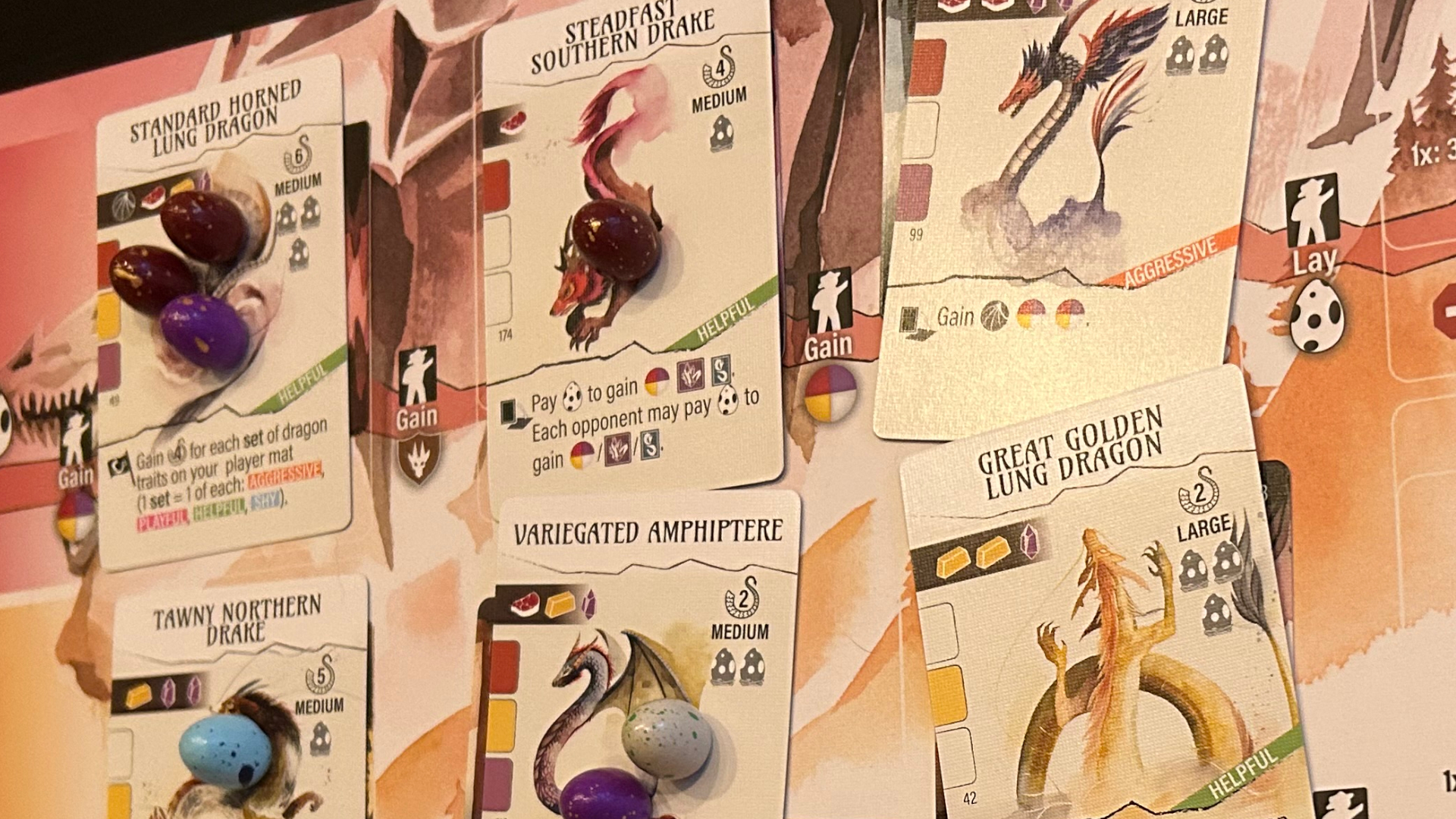
- More strategic than Wingspan
- Lacks incentive to stay invested during opponent turns
- Highly replayable
Wyrmspan players want to fill their caves with dragons that will give them the most points at the end of the game. Each board starts with three open caves — one for each biome — and you’ll need to excavate additional spaces that become progressively more expensive as you move from left to right. Caves give you some sort of reward when played, like food needed to entice dragons to move in or eggs used to pay for actions or as end-of-game points, and the first decision players need to make is choosing between their initial starting cards and picking out some free resources that will get their engine humming.
Playing cards is simple, but the real meat of Wyrmspan comes from exploring caves. The more dragons you have, the more fruitful explorations will be. Starting off, the three zones just provide one food or a dragon or cave card, respectively. But as the board fills with dragons, exploring provides more of those staple rewards and reputation with the dragon guild. That’s represented by a shared map that provides a wide variety of resources as players race to earn bigger bonuses and reserve end-of-game points.
Many dragons have abilities that trigger during an 'explore' action that can provide free resources or allow you to cache resources that will provide end-of-game points. Hatchlings are especially powerful early in the game as they provide a reward every time you activate them, with a sizeable bonus the third time they’re fed a resource or card.
The trick is deciding where to invest your cards. Fill up a biome and you’ll be able to spend resources and cards to gain an extra action and will be able to earn big points on further explore actions. That makes focusing very appealing, but ignoring any of them is going to force you to take some unimpressive actions when you find yourself with a shortage of cards or resources. There are many cards that allow a player to gain resources and opponents to gain a lesser amount which mitigates this problem a bit in larger games. It’s one of the few elements of interaction in Wyrmspan but it’s rarely worth trying to starve your opponents since the benefits you gain from these cards are so much greater.
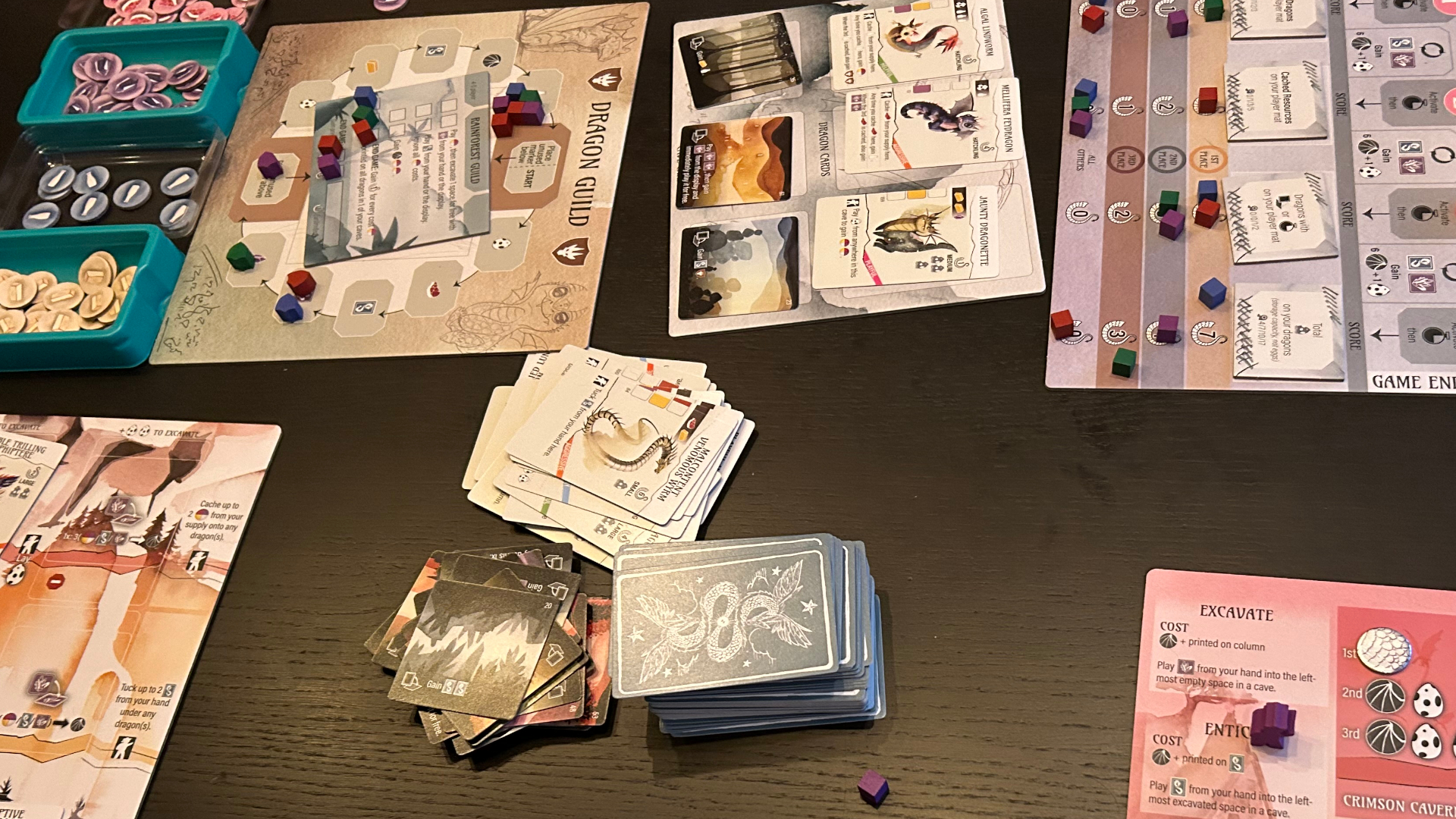
While some dragons can be played in any row, most have restrictions which will shape your strategy. Many dragons also are synergistic, offering bonus points at the end of the game if you focused on their type (like 'shy' or 'helpful') or positioned them in a full row. Plus, each round has its own objective, like most large dragons or most eggs being worth bonus points based on your ranking. Again, this seems like it should mean you have to pay attention to what your opponents are up to, but the rewards aren’t quite big enough to bend over backwards shaping your strategy around them. Even though players share a pool of dragons and caves, there’s not too much real competition over the resources since everyone is very quickly going to be crafting their own strategy.
As with any engine-building game, you’ll want a balance between dragons that can activate for resources that will make it easier for you to play more cards and ones that are just worth a lot of points at the end of the game. In Wyrmspan you can often make that pivot relatively quickly and still do well. While it’s a valid strategy, it’s a bit dull to sit there with a bunch of high value dragons that don’t do anything while watching your opponents take complex turns involving lots of activations.
Wyrmspan feels like playing solitaire with other people at the table, which makes it well suited to solo gaming. The AI deck’s actions are simple to adjudicate but well balanced against the points a player will score, especially when you’re testing out new strategies. If you want more of a challenge, you can add in different cards to ramp up the difficulty.
Should you buy Wyrmspan?

If you’re a big fan of dragons and either love Wingspan or generally enjoy low-interaction board games, you’ll likely appreciate Wyrmspan. It’s a beautifully-produced game with plenty of replayability thanks to the wide variety of dragon cards. It doesn’t take long to learn or play either, but has some satisfying crunch to its strategy that might appeal to people that found Wingspan a bit too light.
If you want at least a bit of tension around the table, though, Wyrmspan might not be the game for you. Play can get especially frustrating if you haven’t developed much of an engine and are watching your opponents show off, even if the choices you made will actually earn you a decent score at the end of the game.
Buy it if...
✅ You love dragons
The art from Clementine Campardou is truly charming, providing a wide variety of styles each accompanied by their own abilities to make every playthrough unique.
✅ You prefer games with low interaction
If you want to just be able to focus on building your best strategy without worrying about opponents interfering, Wyrmspan will provide a chill night of gaming
Don't buy it if...
❌ You didn’t like Wingspan
Wyrmspan has a bit more crunch than Wingspan but it’s fundamentally a very similar game. If you weren’t charmed by Wingspan’s focus on collecting and engine building, you’re probably not going to appreciate this update.
❌ You get bored waiting to take your turn
There’s a lot of downtime without much to do, especially in the later rounds when explore actions get more involved.
How we tested Wyrmspan
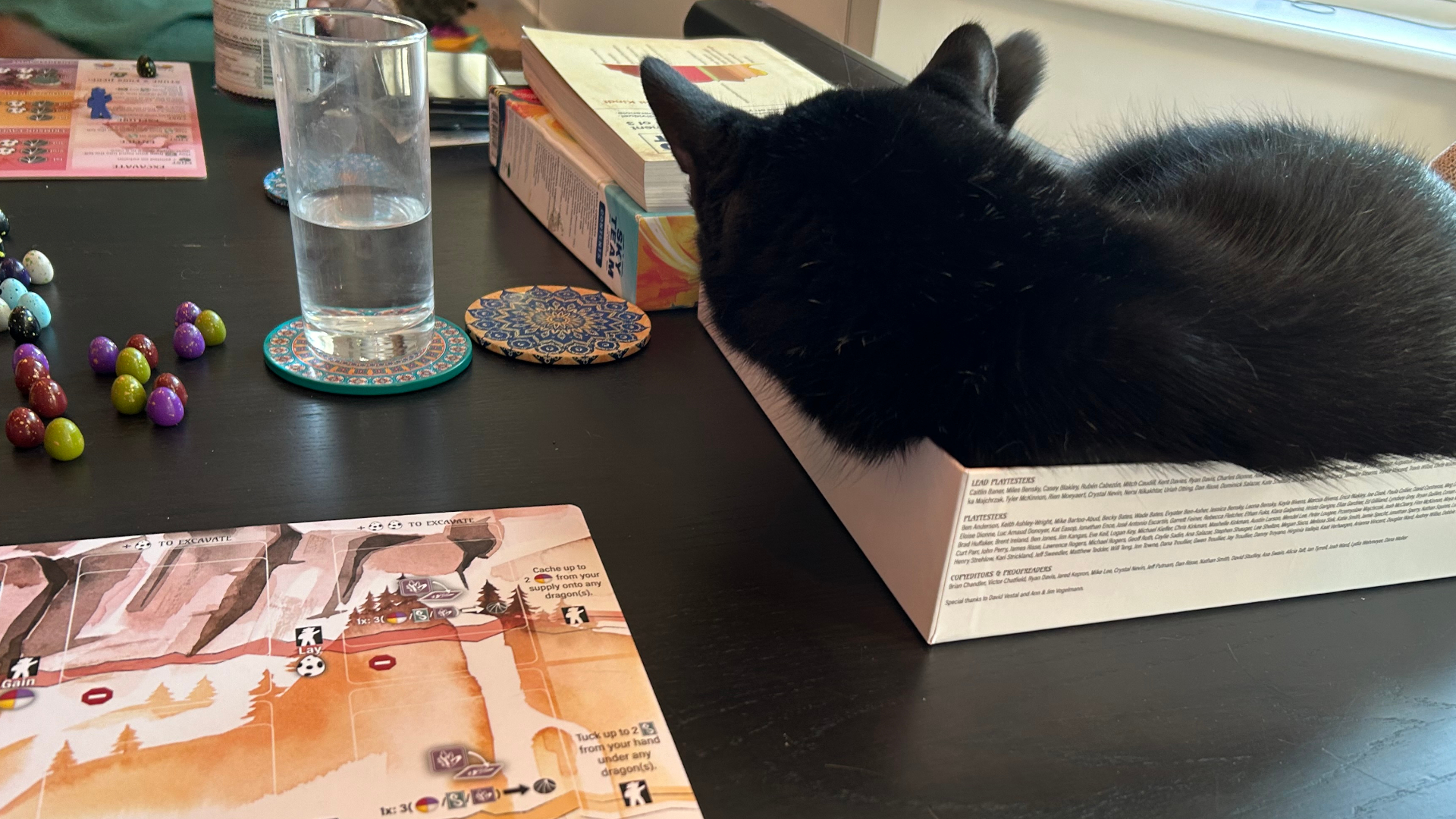
This review was conducted using a sample provided by the publisher.
Our reviewer ran multiple in-person sessions of Wyrmspan with different player counts (from solo play upwards) to get a better sense of how the experience differed each time. They also directly compared it to competing games and its predecessor, Wingspan.
You can find out more about our process via the GamesRadar+ review policy, or by visiting our guide to how we test board games.

Samantha is a freelance writer that specializes in tabletop gaming. Her credits include Dicebreaker, IGN, Polygon, and The A.V. Club.
